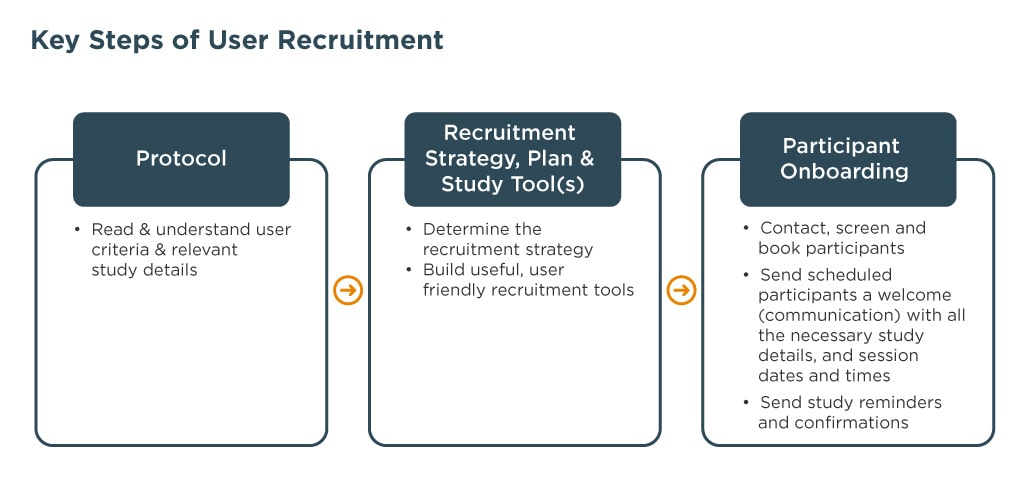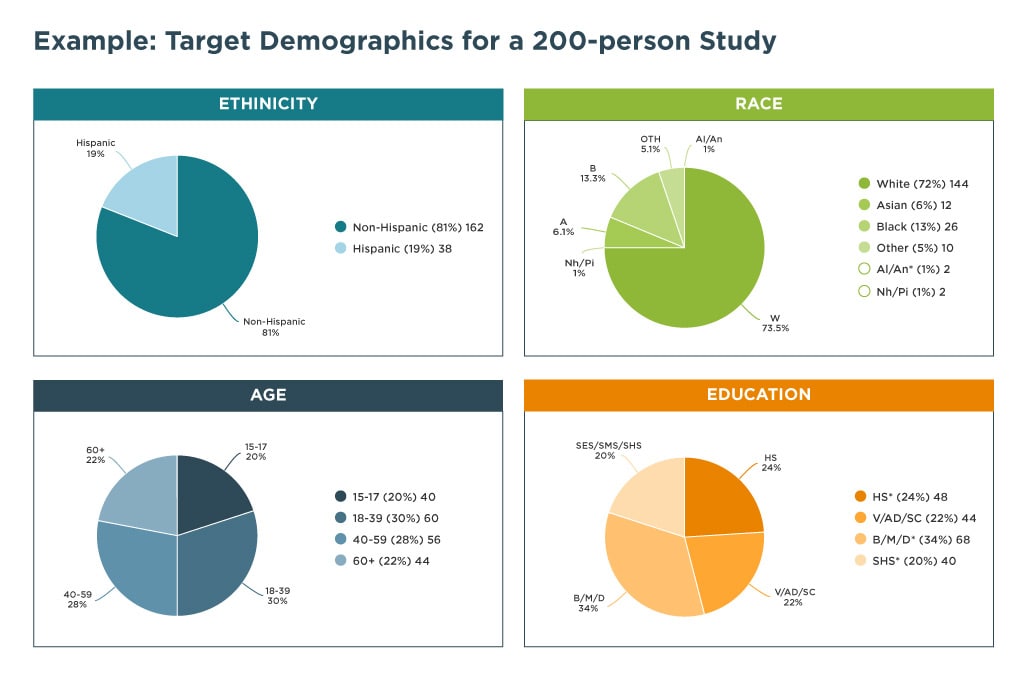Medical Technologies

User Recruitment in IVD Medical Device Usability Studies: Simple or Complex?
Tammi Armstrong, RN-MSN, Amanda Dowdy
To conduct usability testing for a product, a carefully selected sample of users is required. The number of users in a usability study is typically just a small representation of the population the study is intended for, so it is important that user recruiters carefully recruit users who will represent the intended population. TE Connectivity’s (TE) IVD Solutions user recruitment team has developed key recruitment steps highlighting the important steps in the recruitment process for a usability study. These key recruitment steps help support a successful recruitment process, from understanding the study’s user requirements to booking users, all the way through managing participants’ onsite experience to provide users comfort by giving honest feedback about the products being tested. There are several reasons why recruitment can be complex. Many of these reasons revolve around recruiting the intended user (e.g., creating diverse user groups, ensuring that users meet inclusion and exclusion criteria, and developing a strategic recruitment plan) and the challenges recruiters face throughout the recruitment process. The aim of this article is to help you to understand what user recruitment is and how the process of recruitment can be complex for user recruiters.
Key Steps of User Recruitment
Research recruitment, whether for usability studies or clinical trials is challenging. “Participant recruitment is understood to be one of the most difficult aspects of the research process” (Maguire and Clarke, 2013). We have found that a clear, sequential, step-by-step method of breaking down recruitment into manageable tasks is key to meeting the numerous and complex demands of user recruitment (see diagram below).

1. Understanding the Study Protocol
The first step of the recruitment process involves thoroughly understanding the study protocol and the required user details (e.g., number of desired participants, user inclusion/exclusion criteria, demographics, desired experience, physical conditions) with the intent of identifying potentially eligible candidates who will be screened, selected, and then provide consent prior to the testing session.
2. Recruitment Strategy
The second and most time-consuming step of the recruitment process is determining the study’s recruitment strategy while building effective user-friendly tools that aid recruiters in identifying, attracting, selecting and communicating with potential participants and one another. User recruiters should confirm that their strategy for connecting with potential participants is clear, simple yet comprehensive, and cost/time effective. Potential participants must know who is eligible, what the study's purpose is, what they will do in the usability session, where the study is located, and how much they will be compensated. Study schedules, flyers, screeners, and participant communication templates (text, email & phone call scripts) are just a few of the many recruitment tools needed during this step. For instance, user recruiters should have a recruitment plan that organizes and captures vital potential participant information in such a way that all recruiters understand which recruiter will be contacting whom, and how the potential participant’s current status will be known. In addition to that, meticulous tracking of key user demographic information like gender, age, ethnicity/race, highest level of education, and handedness will continue throughout the recruitment process. Here is an example of visual recruitment tools created for a typical 200-person study.

3. Participant Onboarding
The last recruitment step is participant onboarding, which encompasses anything that happens between contacting the participant and the participant consenting to be in the usability study. During this step, potential participants are contacted via text, email, or phone call. If they are qualified and available during the study dates, they are given a screening questionnaire to complete and first-time participants experience an initial phone call that helps them know what to expect. This phone call also assists the recruiter to determine if they would be a suitable candidate. If the participant is eligible, a recruiter will schedule the participant’s study session and send additional study information. Before the scheduled session, the participant will receive an email confirmation with session, location and parking information and a text reminder.
Recruiting the Intended User
Recruiters should find users who meet the inclusion criteria of the
study, who are demographically representative of the intended population, and who provide quality feedback. TE’s IVD Solutions user recruitment team has created a participant database of healthcare professionals, laboratory professionals, lay users, home users, and donors, to help ensure that each type of user is represented. Participants are selected from this database and screened to confirm they meet the inclusion and exclusion criteria as determined by the sponsor. Some common inclusion criteria for studies are the intended users needing to have experience with instruments or procedures, having a certain medical condition or working in a specific setting. Some exclusion criteria for studies are the intended users being overqualified due to having experience with the product of the study, or experience with a similar product (so that the first-time user experience is captured).
In addition to finding users who meet the intended user criteria, recruiters must select participants who meet the study's demographic needs. Every study requires finding the appropriate mix of users, while maintaining demographic diversity, for the study results to be relevant and practical for the intended user
population (Axén et al., 2021). Depending on the geographical location of the
study site, some participants who have uncommon demographics may take more time to recruit.
While meeting the study’s intended criteria and demographic needs is important for users, they must also be able to provide quality feedback. Even if a user's demographics and experience may qualify on paper, they may not be reliable at providing quality feedback. User recruiters select potential participants who they think would provide quality feedback.
Challenges Out of Recruiters’ Control
It is common for challenges to arise during the recruitment process. Due to this, user recruiters must be highly adaptable and proactive. One of the biggest challenges user recruiters face is creating a diverse user group as historical mistreatment and discrimination of minorities has led to a mistrust of research and health professionals (Renert et al., 2013). This understandable mistrust can lead to a lack of interest in participation. Another common challenge recruiters face is slow potential participant responsiveness rate. This may be difficult for user recruiters, as the selected participants may be slow to respond to communications or may not be responsive at all. Another challenge recruiters face is accommodating multiple users’ schedules while keeping to the study’s timeline. Recruiters are also faced with the challenge of unexpected cancellations or delays. Participants may cancel their session at any point in the process (sometimes even as late as an hour before their scheduled study session) due to schedule changes or illness. Depending on the study's timeline, user recruiters may have to urgently find a replacement participant for the cancelled session.
Conclusion
Recruitment for usability studies can be a complex process. User recruiters should balance a variety of factors when recruiting good participants for a study. The intended population should be represented in the user group, and user recruiters select participants by utilizing a diverse participant database and understanding the user criteria, while also staying highly adaptable throughout the process. TE’s IVD Solutions user recruitment team has a multidisciplinary team of user recruiters (e.g., psychology, biology, nursing and cognitive science) that will help confirm that your intended user is represented and given an outstanding recruitment experience. Stay tuned for our next user recruitment article, which will focus on how user recruiters have created simple solutions to the complexity of the recruitment process.
Sources
- Axén, I., Björk Brämberg, E., Galaasen Bakken, A., & Kwak, L. (2021). Recruiting in intervention studies: challenges and solutions. BMJ Open, 11(1), e044702.
- Maguire, L., & Clarke, M. (2013). Survey of challenges and best practice strategies for participant recruitment to research projects in Northern Ireland. Trials, 14(Suppl 1), P85.
- Renert, H., Russell-Mayhew, S., & Arthur, N. (2013). Recruiting Ethnically Diverse Participants into Qualitative Health Research: Lessons Learned. The Qualitative Report, 18(12), 1-13.

